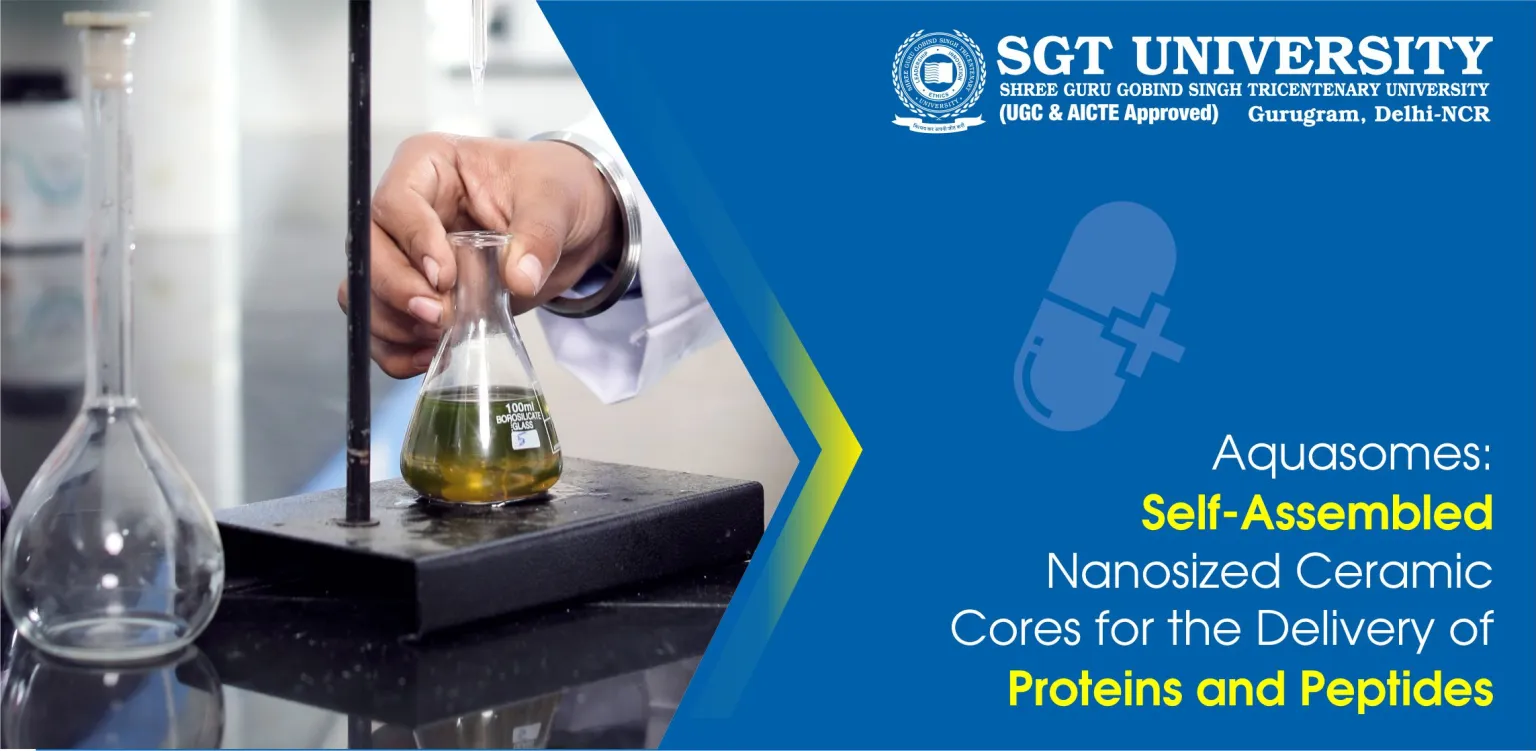Aquasomes have emerged as a breakthrough in the delivery of therapeutic proteins and peptides, addressing a critical challenge in modern medicine. Many proteins and peptides, despite their therapeutic potential, fail to deliver consistent benefits when administered via conventional methods like parenteral routes. This is due to the limited duration of biological activity and degradation risks.
The Science Behind Aquasomes: Self-Assembled Nanosized Ceramic Cores
Proteins and peptides have transformed clinical treatment since the introduction of recombinant human insulin, and are now used to manage conditions like hypothyroidism and hemophilia. However, these drugs fall under the Biopharmaceutical Classification System (BCS) – Class III, which means they have good solubility but low permeability. When administered orally, their absorption is often poor, leading to inconsistent therapeutic effects.
Additionally, proteins are sensitive to environmental changes. Even minor alterations in pH, temperature, or agitation can degrade proteins, making formulation development challenging. Unlike conventional drugs, the large molecular size of proteins further complicates their delivery.
Aquasomes: A Novel Nanotechnology-Based Delivery System
Aquasomes offer an innovative solution to these challenges. These self-assembled nanoparticulate delivery systems consist of three layers: a nanocrystalline core (solid phase), an oligomeric coating, and an active drug layer. Each layer is assembled using non-covalent bonds, ensuring structural stability while protecting the therapeutic protein or peptide from degradation.
Key Features of Aquasomes:
- Core Stability: The nanocrystalline ceramic core, typically modified with carbohydrates (e.g., sucrose, cellulose), provides structural integrity and stability.
- Surface Coating: The surface is coated with oligomers, creating a glass-like molecular film that stabilizes the adsorbed proteins and peptides.
- Non-Denaturing: The carbohydrate coating protects the therapeutic molecules from environmental factors like pH changes and temperature fluctuations, preventing denaturation.
This unique structure ensures that aquasomes maintain the conformational integrity of proteins and peptides, making them ideal for delivering biomolecules like hormones, enzymes, and antigens.
Advantages of Aquasomes in Protein and Peptide Delivery
The ability to protect the structural integrity of proteins and peptides makes aquasomes a promising vehicle for drug delivery. Key advantages include:
- Targeted Delivery: Aquasomes offer the potential for targeted drug delivery of therapeutic proteins and peptides, minimizing side effects and enhancing therapeutic efficacy.
- Stability: The structural stability of aquasomes ensures prolonged biological activity of the therapeutic agent, providing more consistent and effective treatment.
- Immunological Response: Aquasomes have shown promise as immuno-adjuvants for protein-based vaccines, eliciting stronger immune responses.
The Future of Aquasomes: Clinical and Commercial Potential
The potential of aquasomes in the field of protein and peptide delivery is immense. By preserving the structural integrity of therapeutic molecules, they could revolutionize treatments for a wide range of diseases. However, further studies are needed to establish the pharmacokinetics, toxicology, and stability of aquasomes to meet regulatory standards and unlock their commercial potential.
Conclusion: Aquasomes – A Promising Future for Therapeutic Delivery Systems
With their ability to deliver proteins and peptides more effectively than traditional methods, aquasomes represent a significant advancement in nanotechnology-based drug delivery systems. Their potential to enhance therapeutic efficacy, ensure stability, and support targeted delivery positions them as a promising tool in modern medicine.
Dr. Vijay Sharma
Professor
Department of Pharmaceutics
SGT College of Pharmacy, SGT University, Gurgaon


